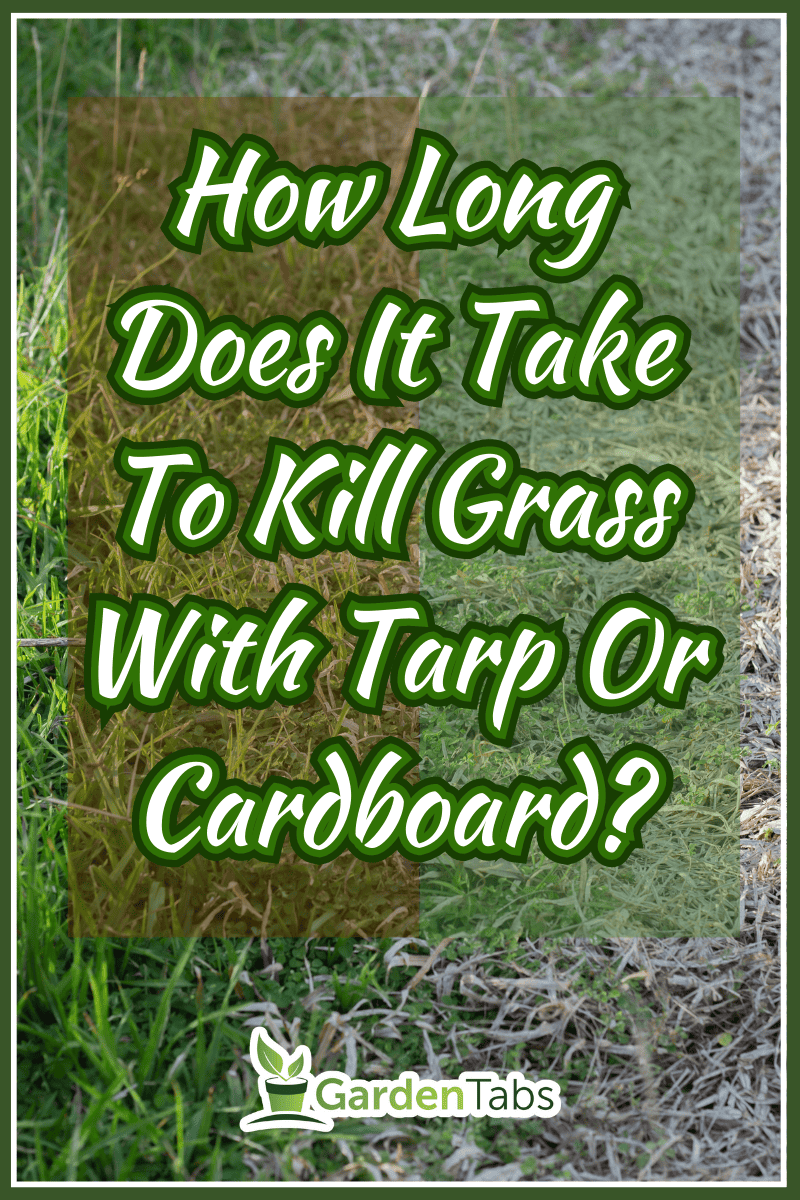You're working your muscles as you push a wheelbarrow around, turning over dirt with a shovel, walking the rows between plants, and pulling weeds. The more space you have in your garden, the more activity you will get. In this article, we will share what we've learned from research about killing grass in your garden using a tarp or cardboard.
Grass covered by layers of cardboard should die in 4-12 weeks, while grass covered by a tarp should die in 4-6 weeks. The more time you spend on it, the better.
A thick layer of cardboard or tarp spread on top of the grass is an effective, nontoxic way to kill it without digging. This method works by preventing the grass from receiving sunlight, causing it to die off over time. Read further to learn how to set up the cardboard or tarp to get rid of your lawn or garden grass.

Natural Grass-Killing Methods
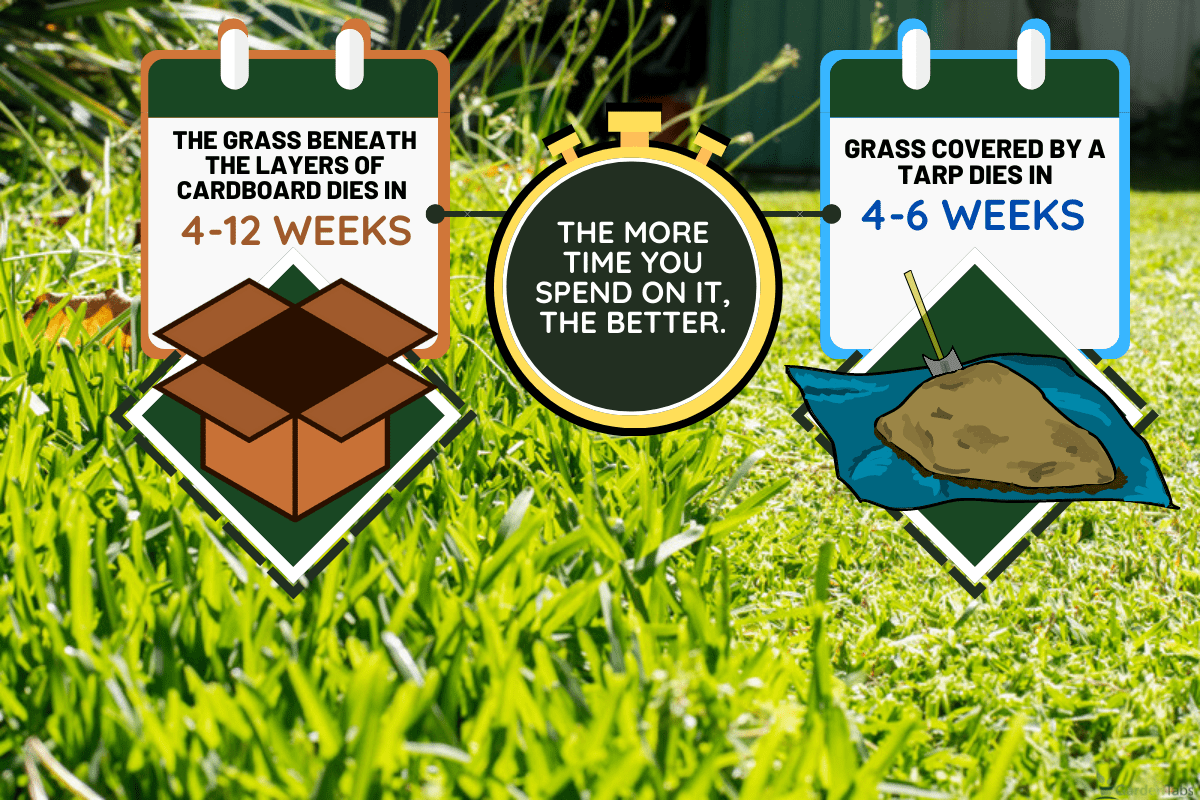
There are several reasons to remove grass from a landscape. The challenge is figuring out how to naturally destroy grass without using harmful chemical treatments.

The good news is that various natural techniques to kill grass use products that are often accessible in the house. Once completed, you will have a safe, weed-free, grass-free zone perfect for planting.
How To Kill Grass With Cardboard?
A thick layer of cardboard spread on top of the grass will destroy grass. This method works by keeping the grass from receiving sunlight, causing it to die off over time.
Prepare The Site
Clear the location of rocks, sticks, and other trash. Cut the grass as short as you can. You can use a garden hose as a template to outline the new bed before putting edging around the perimeter.
Cover The Grass With Cardboard
Use high-quality cardboard to ensure that the weeds are completely covered and that all light is blocked. You can use packing boxes or heavy-duty freight boxes nearly double the thickness of standard shipment boxes.
Thin cardboard, such as cereal boxes, degrades quickly and allows weeds to grow. Use corrugated cardboard boxes and remove the tape.
This type of cardboard will be progressively broken down by soil bacteria and worms, improving the soil beneath. The weeds beneath will have died off when the cardboard has been broken down.
Cover All The Gaps
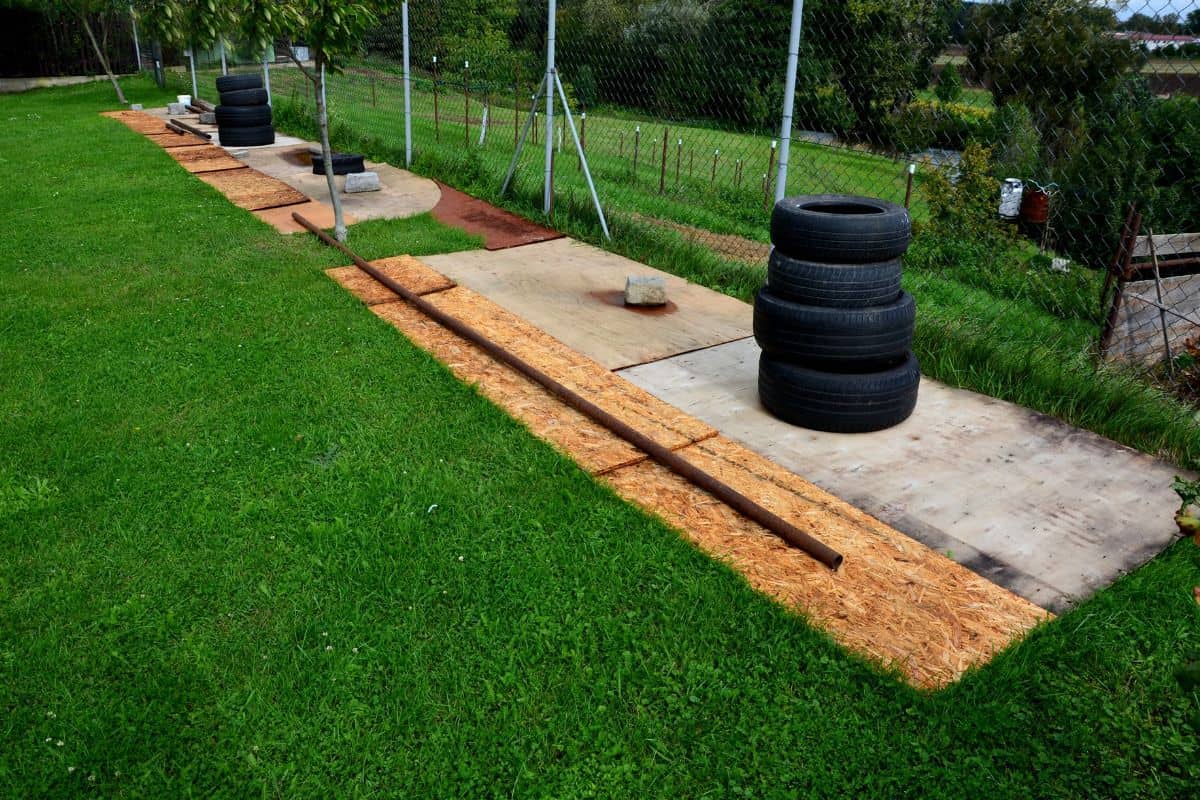
Keep the pieces close together when placing the cardboard on the soil and don't leave any gaps. Weeds may grow through any little openings that allow light to get through. Large boxes are ideal since they completely cover the space.
Overlap the sides of the boxes so that one box confines the other and completely covers the soil.
Double Layering The Cardboard
Always use a second layer of cardboard when placing cardboard on the ground to cover difficult weeds or turf. Lawns are difficult to destroy and may regrow from even the tiniest quantity of light.
A double layer of cardboard is frequently required for grass that grows with runners or has a lot of seeds. Layer the dirt twice with thick cardboard. Then spread compost and aged manure on top to make a garden bed.
How To Kill Grass With A Tarp?
If you want to eliminate some undesirable grass for a new garden bed, solarizing it using a plastic sheet is an easy method. It is far less labor-intensive than digging up the grass for a new bed and uses no toxic chemicals.
Soil solarization uses the sun's energy to warm the soil and destroy grass, weeds, fungus, and other agricultural pests. It works best in hot, sunny conditions but may also be used in cooler climes with a few changes.
Prepare The Site
Mow or straw the area to keep the weeds and plants low to the ground. Get rid of any perennial weeds.
Cover The Grass With Tarp
Cover the lawn with a plastic tarp. To keep the tarp in place, place bricks, rocks, or other heavy items around the edges. You can also bury the tarp's edges in the soil to hold it in place.
During the summer, leave the tarp on the lawn for 4 to 6 weeks. If you're trying to kill grass using a tarp during the colder months, leave the tarp in place for up to 10 weeks.
Remove the tarp and rake away the dead grass.
Now that you know how to set up your grass barrier let's look at the advantages and disadvantages of employing this strategy. Continue reading to learn more about the various natural methods for destroying your grass.
What Are The Pros and Cons of Using Cardboard?
There are certain tested and proven methods for using cardboard in your garden, but this is not a foolproof solution. Before you go out and buy moving boxes for your garden, consider the advantages and disadvantages of cardboard grass barriers.
Pros
- Cardboard is biodegradable. It decomposes over time, delivering nutrients to the soil and ultimately benefiting soil life.
- It's a non-chemical technique for managing weeds.
- Cardboard attracts worms, which help aerate your soil.
- Cardboard is inexpensive and widely available.
Cons
- When it's windy, it might be tough to lay down cardboard.
- Persistent creatures can dig straight through it, leaving gaps for weeds to grow through.
- Mulch may periodically slip off the portions of it, exposing the cardboard, which is not appealing. This is possible with heavy rains or strong winds.
What Are The Pros and Cons of Using A Tarp?
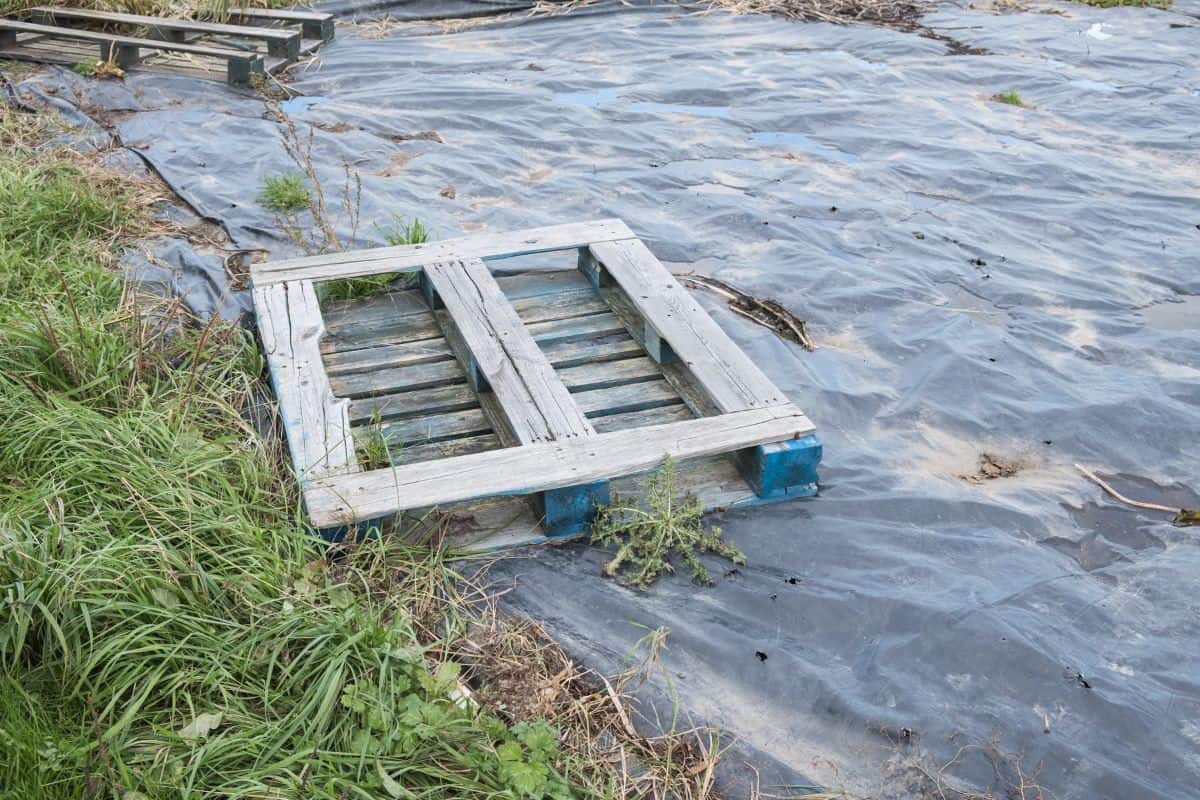
Before you begin, you should think about the benefits and drawbacks of a tarp grass barrier.
Pros
- Installing it is simple. It's good to have a companion to assist you in stretching the long piece of plastic into place, then secure it by placing bricks down every three feet along the border.
- You may use the terrain's natural slope and contour to route rainfall to other regions. So it's not just a lack of light that kills the plants below the tarp, but also a lack of moisture.
Cons
- It is expensive, and you are going to use other resources to make the installation easier, which adds another cost.
- When it comes time to take down the tarp, the task may be both difficult and time-consuming. By this point, the cloth is covered with dirt and may tear apart as you try to raise it.
Other Natural Ways to Kill Grass and Weeds
Weeds, those unwelcome guests who drain your plants of space and nutrients, are the bane of every garden or yard. You can get rid of those noxious plants without using toxic chemicals that can harm you.
Vinegar
Vinegar is an excellent solution for anyone searching for a low-cost, natural way to kill grass. Just spray vinegar on your grass and wait for it to die.
Choose a day with little wind and no rain in the forecast for the highest chance of success. Hotter temperatures aid in this process, so plan your vinegar application on the warmest day possible.
You may need to respray your yard every few days until the grass is completely dead. When working with vinegar, remember that it is an indiscriminate killer, so keep it away from any plants you want to retain.
Note that vinegar often destroys what is above ground and does not harm the roots. As a result, you may need to continue this method until your grass dies.
Boiling Water
Pouring boiling water over grass, weeds, or undesired plants is a cheap and easy approach to destroying them. Pour a kettle of hot water directly on top of the weeds. Even the strongest plants will wilt within days due to the searing water.
This makes excellent use of the excess water from boiling pasta, so keep it and throw it into your garden rather than down the drain. Remember that this is another way that often only destroys what is above ground and does not kill the roots.
Shovel Method
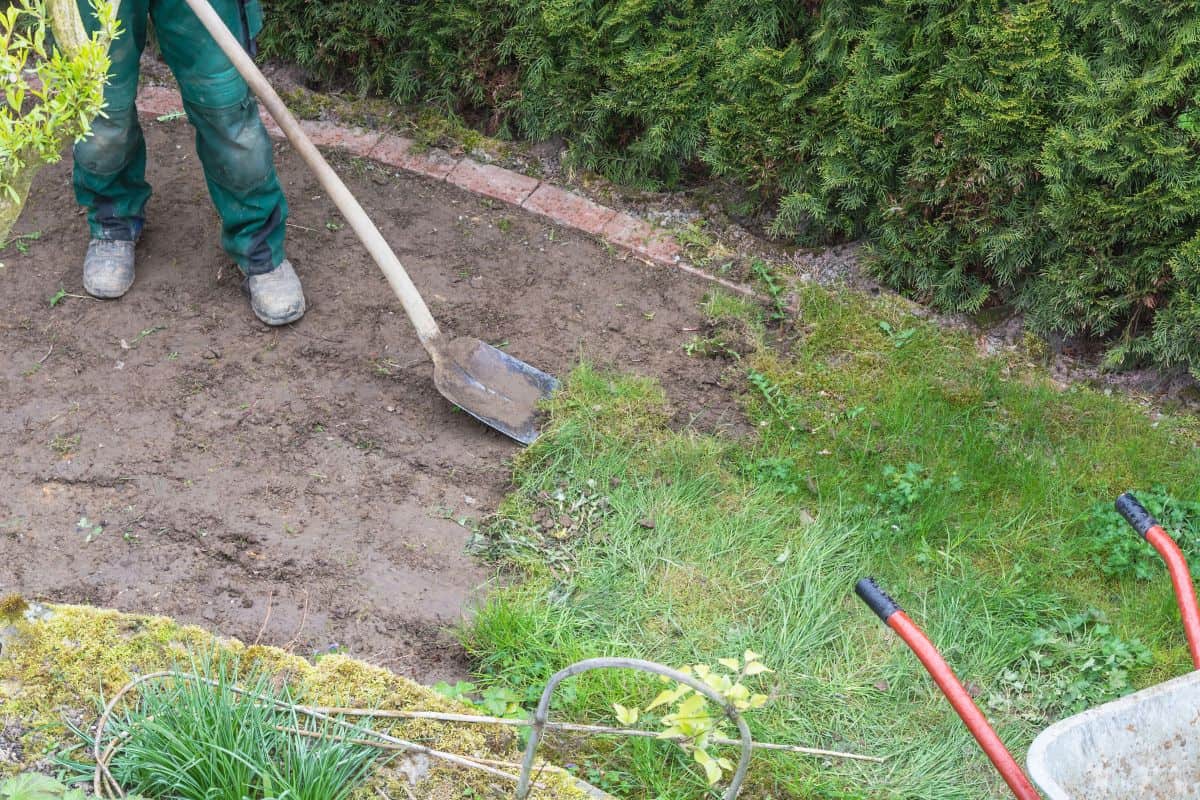
You may physically eliminate your grass by digging it up if you don't mind a little hard work. Stop watering your grass till it turns brown and dies. Once it's dead, get a shovel and begin digging.
Know where your irrigation lines are to prevent adding irrigation repairs to your to-do list. Even if you apply the other options on this list, you may need to excavate your dead lawn if you cannot just let it compost in place.
Salt
Weeds, grass, and other undesired plants can be quickly and naturally killed using salt. Salt, like vinegar, is an indiscriminate killer, so use caution when applying it to your grass.
You may either sprinkle it on your lawn and then water it to get the salt into the soil, or you can mix salt and water in a garden sprayer and spray it on your grass.
In either case, keep the salt away from flowerbeds and other desirable vegetation. Only apply salt in locations where you don't want anything to grow again.
While soil may recover from the addition of salt over time, you will need a lot of patience to wait for this to happen.


Click here to see this product on Amazon.
Final Thoughts
Using cardboard and a tarp to create a weed barrier will help your garden in various ways. Cardboard and tarps effectively prevent undesired plants from sprouting or growing.
The dead weeds and cardboard biodegrade in a couple of weeks, providing organic matter to the soil beneath and increasing its nutritious value.
If you enjoyed reading this topic, you might like these other articles:

